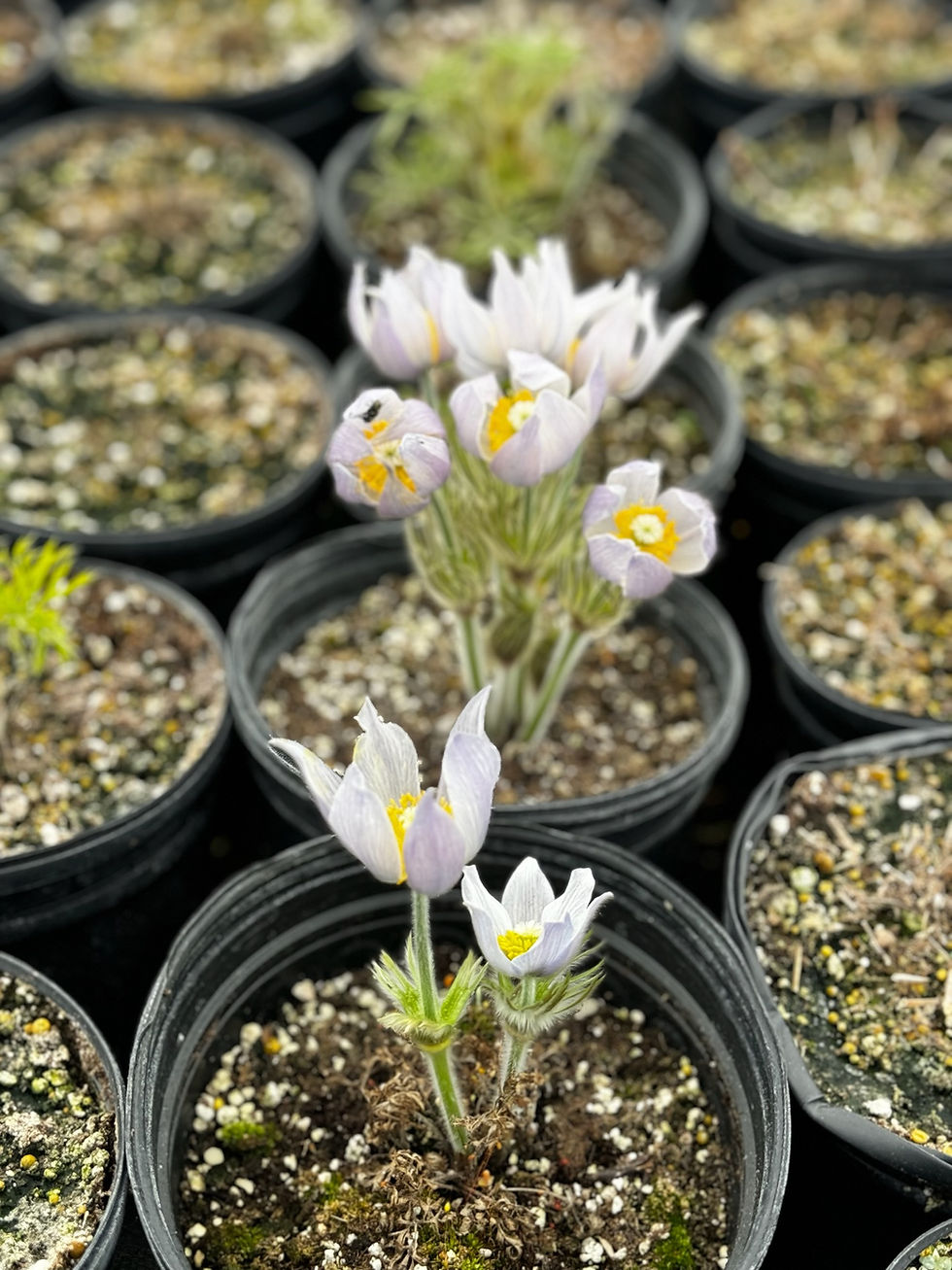Featured Plant - Harebell
- Rosie Reynoso

- Jun 28, 2024
- 2 min read
Updated: Jan 6

It is blooming time for Campanula rotundifolia which goes by many names: Harebell, Blue Bellflower, Lady's Thimble, Scotch Bluebell, or my personal favorite Witch's Bells. The genus name comes from the Latin "campana" meaning "bell" referring to the bell-shaped flower. You can find these magical-looking bell-shaped flowers in various environments such as meadows, grasslands, rocky slopes, sandy shores, and even up to alpine elevations of 12,000 feet in the Northern Western states. These habitats range from full sun with dry soil to shady with moderate soil moisture. Harebell blooms in early summer, and individual plants can continue to bloom into August if the spent blossoms are dead-headed.


Now let's talk about their appearance. They emerge from the soil starting small and close to the ground with a rosette arrangement of rounded basal leaves, hence the specific name rotundifolia. Then wiry, thin thread-like stems with narrow, alternating leaves (1-3" long) grow upright, typically growing up to 20" tall. Once the flower forms, the basal leaves usually wither away. The nodding, papery thin flowers are about an inch long and have 5 sepals fused into a bell shape in shades of blue and purple. Even with these delicate-to-the-eye features, Harebells are more hardy than its appearance suggests, thriving in harsh habitats such as the ones listed above. If you are looking to add them to your garden, Harebell like to grow in large groups for pollinator gardens.
Planting notes:
Grows in well-drained soils in full sun to part shade. Bloom times from June to September with medium watering and low maintenance. Though dead-heading is encouraged for additional blooms, it is not necessary. Plants are self-seeding and can spread by creeping roots. Cuttings may be propagated to make more plants.
Planting Buddies
Prairie Junegrass (Koeleria macrantha)
Woods rose (Rosa woodsii)
Leadplant (Amorpha canescens)
Little Bluestem (Schizachyrium scoparium)
Western Columbine (Aquilegia formosa)
All of these can be found here at Great Bear Native Plants!
Sources:




Comments